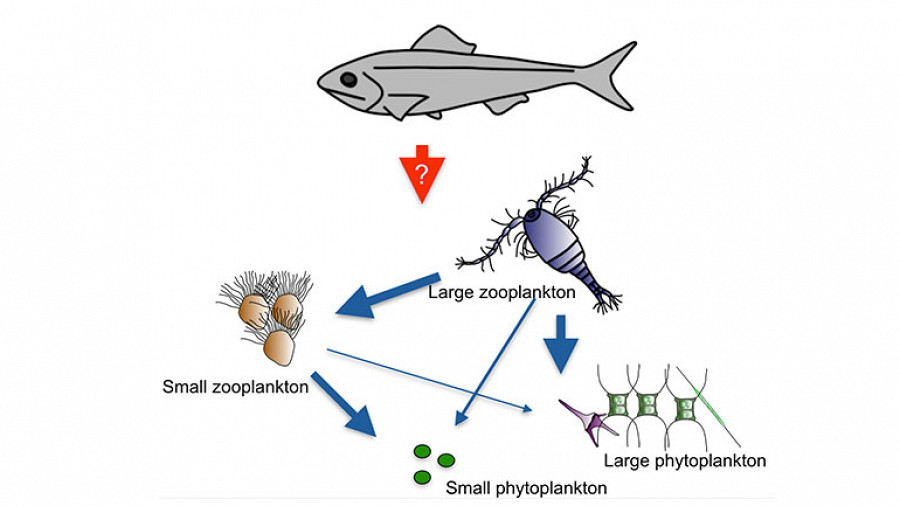New publication online: Zooplankton mortality effects on the plankton community of the northern Humboldt Current System

The northern Humboldt Current System (NHCS) is an important worldwide fishing ground as around 10% of global fish catches come from the waters off Peru’s coast. Small pelagic fish such as the Peruvian anchovy and the Pacific sardine are very susceptible to environmental variability, such as warming of the waters, and have fluctuated dramatically in the past. So far, studies have looked at the effect of the environment, sometimes denominated „bottom-up“ on the fish populations, but little attention has been paid to the effects of the fish variability on the biogeochemistry of the system (top-down effects).
We used a computer simulation, or „model“ of the eastern tropical South Pacific ocean to understand such effect. In our models we changed the mortality of zooplankton, microscopic organisms in the water, to mimic fish predation off Peru’s coast. This is possible because small pelagic fish, such as anchovies and sardines, feed on these plankton. When there are a lot of fish, you can expect that the abundance of their prey, for example large zooplankton, is low and vice versa. This can have a top-down effect on their food webs, so on smaller zooplankton and phytoplankton.
The top predator in our model was large zooplankton, which is the main prey of anchovies. When we simulated low fish predation in our models (low mortality of zooplankton and, therefore, high abundance of large zooplankton), it had a large effect on the food web. This means that if there are less fish, large zooplankton can thrive. Because there is more larger zooplankton, their prey, small zooplankton and phytoplankton, decrease as more of them are eaten. When the opposite scenario was simulated, so more fish present and therefore fewer large zooplankton, the response was opposite, but weaker. As more large zooplankton were eaten, the smaller plankton increased.
Our study provides a first insight into how fluctuations of small pelagic fish could affect the plankton community of the NHCS. Our approach of changing zooplankton mortality allows us to understand the response of the system without the need of including a fish model. This reduces complexity and uncertainties in the model.
Original publication:
Zooplankton mortality effects on the plankton community of the northern Humboldt Current System: sensitivity of a regional biogeochemical model
Mariana Hill Cruz, Iris Kriest, Yonss Saranga José, Rainer Kiko, Helena Hauss, and Andreas Oschlies



